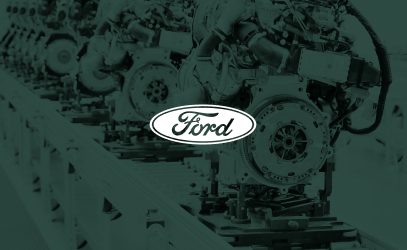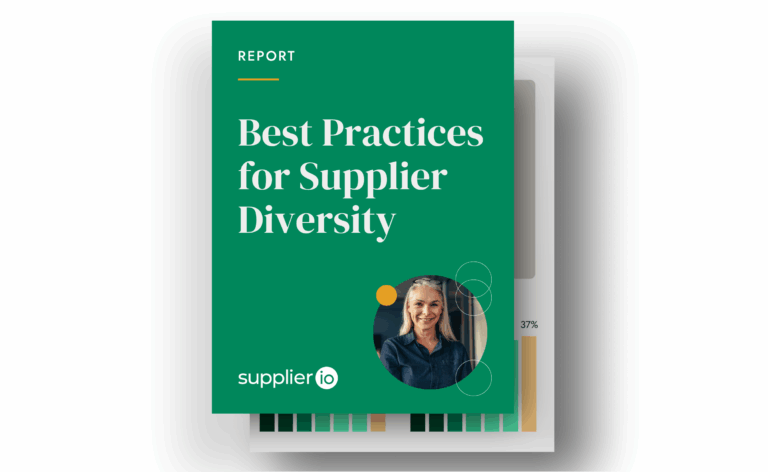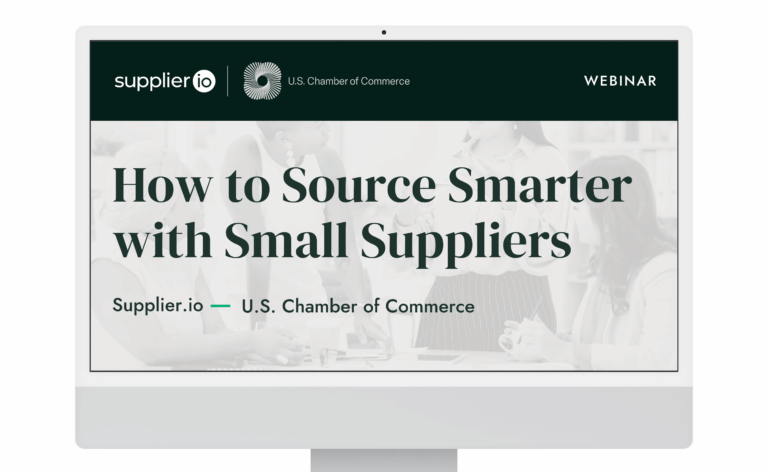Customer Spotlight: Ford (Part 2)
Ford is building an impressive Tier 2 program. Learn how they make Tier 2 easy for suppliers and helpful for Ford.

Ford is always looking to move the needle as it relates to supplier diversity & inclusion. A new procedure for following up with diverse suppliers launched last year, and in 2020, the company is piloting a new supplier development program called Widening the Inclusion Network (WIN).
WIN is focused on increasing the diverse spend of its Tier 1 suppliers as well as ensuring that Ford’s supply base has healthy, competent, and robust supplier diversity programs. WIN is an opportunity for Ford to hold its strategic suppliers accountable for their supplier diversity initiatives. WIN also amplifies the impact that Ford has on the world today.
“We want to hold our suppliers accountable for our supplier diversity objectives, as well as create that downstream diversity ripple effect within our supply chain,” said Cameron Boli, Ford Supplier Diversity Analyst.
“A lot of times when you think of supplier diversity, you just think about the spend numbers; but supplier diversity is so much more than just the spend numbers.”
In addition to launching WIN, Ford has also expanded the metrics of their Tier 2 program. Historically, Ford recognized suppliers solely based upon their diverse spend performance but now is adding the following metrics to their Tier 2 program:
- Level of engagement with advocacy groups
- Workforce diversity
- Community outreach.
Ford has many subset development programs that are also a part of their overall supplier diversity program. In addition to their Tier 2 WIN program Ford also develops Tier 1 Suppliers through their Supplier Skills for Life Program and their Mentorship programs.
Supplier Skills for Life is an opportunity for Ford to develop the skills and business acumen of its supply base through monthly blogs on their supplier diversity website.
Ford’s Mentorship programs provide an opportunity for both Ford executive leadership as well as leadership in its supply base to mentor diverse entrepreneurs. Two times a year, Ford hosts a miniature trade fair event called Supplier Diversity Pop Ups. This is a focused trade fair event that provides high performing diverse suppliers with an opportunity to network with Ford’s buyers in hopes of potential business opportunities.
The Challenge
Ford’s supplier diversity program is a benchmark for other automotive OEMs as well as corporations in other industries. By any definition, it is successful. Although Ford is perceived as an industry leader, they’re always looking for ways to be more innovative in regards to supplier diversity. How could they be more inclusive and support greater economic equality?
One of the answers was in its Tier 2 program.
“There are only so many opportunities at the Tier 1 level,” Boli said. “So in order to expand the number of opportunities available for diverse businesses, we have to look further down our supply chain.”
Travis Spencer, Ford’s Head of Supplier Diversity & Inclusion, said they started by examining the current program and identifying weaknesses and strengths.
“First, we identified the needs of our supply base,” he said. “We looked for the weak points and we saw that a lot of our suppliers don’t have strong supplier diversity programs. We also identified our strengths, like the fact that at Ford, we do have a healthy supplier diversity program. So the question became: How do we leverage our expertise and experience and resources to help our suppliers develop strong supplier diversity programs?”
Fortunately for Spencer and his team, management was already aligned with a goal to improve Ford’s Tier 2 program.
“We were in our VP review and one of our vice presidents asked, ‘What’s going on with our Tier 2 program? When are we going to create a program that really holds our suppliers accountable for our supplier diversity initiatives?’” Spencer said.
The Solution
In 2020, Ford will implement WIN: Widening the Inclusion Network, a four-phase, 18-month program that draws on best practices to create development goals for a select group of Tier 1 suppliers.
The WIN pilot program will include 5-7 of Ford’s Tier 1 suppliers. This first cohort will be selected based on a variety of factors: Historical diverse spend performance, supplier relationship classification (long-term preferred), amount of business a supplier has with Ford, and the number of opportunities identified within the supplier’s program.
“We’re targeting Tier 1 suppliers that have underdeveloped supplier diversity programs, as well as those that struggle to meet Ford’s diverse spend goals on an annual basis,” Boli said.
“We’re also focusing on strategic production suppliers who have a large amount of business with Ford. It is a requirement that all of Ford’s long-term preferred suppliers have a supplier diversity program in place.”
Each of the Tier 1 suppliers will progress through four phases, styled after the stages of a marathon to reflect that developing a successful supplier diversity program is not a short-term effort.
“When you think of supplier diversity, it’s a marathon. It’s something achieved over time,” Boli said.
WIN Phases
Warm-Up or Starting Block Phase: Ford and supplier meet to determine if the supplier is a good fit for the program. Supplier submits Opportunity Assessment and Plan for the program. 1-2 months
Sprint or Fast-Start Phase: Suppliers identify and implement “Quick WINS.” Quick WINS are ideas that can be implemented within a program within a short time frame. An example of a Quick WIN would be identifying existing diverse suppliers within your supply chain that are not certified. 3-4 months
Hurdle or Pace Phase: Suppliers identify and implement “Major WINS.” Major WINS are ideas that take time to be implemented within a program. An example of a Major WIN would be the creation of a Supplier Diversity strategy. 6-9 months
Homestretch or Finish Phase: Supplier identifies a sustainability plan for its program and summarizes its growth and development within the WIN program. 3-4 months
“The reason we designed the program to last about 18 months is that adding new suppliers to your base or awarding new contracts can take up to a year,” Boli said. “We wanted to create a program that was long enough where we could see results.”
Ford is harnessing the depth and breadth of its Unitier System to power WIN. From searching its robust database to find diverse suppliers that might be a match for Tier 1 needs to utilizing communication tools to tracking metrics, the portal offers multiple tools and capabilities for helping Ford’s WIN program succeed.
“When a Tier 1 supplier comes to us and says, ‘We need a facilities management supplier,’ we would look into our portal and identify suppliers that we can facilitate introductions with,” Boli said.
The Results
Although initial results from the first WIN cohort will not be available for several months, Boli is excited about implementing the new program and measuring its impact.
“Widening the inclusion network extends Ford’s impact on the world and allows us to make so many more people’s lives better,” Boli said. “It comes down to two words: impact and reach.”
Although each of the Tier 1 suppliers will undergo the same four phases, what happens during those phases will differ based on the supplier’s opportunities. This is not a one-size-fits-all program, Spencer stressed, and the results will not be standardized either.
“Success for this program is going to be different for each supplier,” he said. “Every supplier coming to us has different weak points that we’re attacking and overcoming through the WIN program.”
This non-standard approach is intentional, Boli said. Ultimately Ford’s supplier diversity and inclusion team hopes that the new initiative will have a positive impact throughout the supply chain and the communities where they do business.




